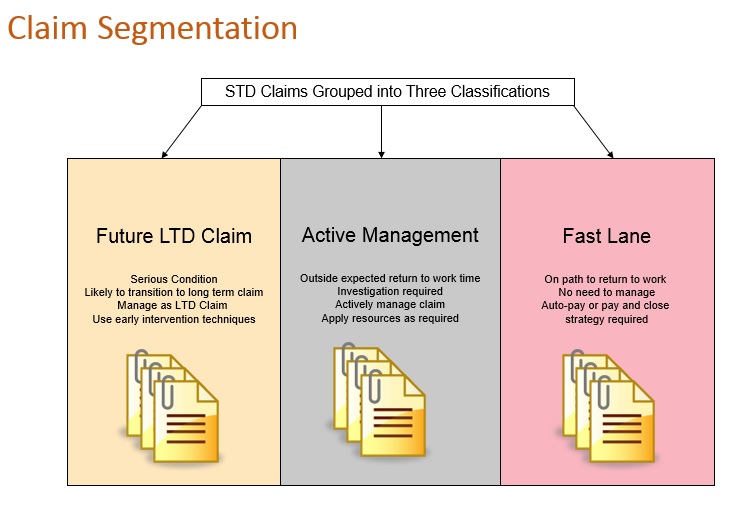October 2016 – Life in the ‘Fast Lane’
Does your claims process have a fast lane?
Claim segmentation is a vital part of a more effective STD process, with less complex claims put through a ‘Fast Lane’ leaving claim managers more time to spend on complex claims. We have a fast lane for highways, Disney World, people with 10 items or fewer at StopNShop – why not insurance claims?
Unlike the highway we can use analytics is a vital part of this process and should be used to drive the segmentation rules. The Claim Lab produces Analytical Models to predict the duration of a STD claim, and from this you can start the segmentation process.
Here is an example, see diagram above, of the STD claims being segmented into 3 buckets. The first segment is the ‘Fast Lane’ claims. These are the claims that are least serious and should be put through a pay-&-close or auto-adjudication process. It is this segment that saves the claims managers time so they can address the other segments.
So by contrast we also segment the most severe claims into the ‘Future LTD’ bucket, as you would expect these are the claims at high risk of transition to LTD. These claims need active management from the outset, and all the benefits of early intervention used.
The last segment shown here is the ‘Active Management Segment’ which are claims that don’t meet the criteria for the other two groups but still need management.
We have seen companies taking variations on this approach. But the key fact is to use the ‘Fast Lane’ segment to save the claims managers time so the more serious claims can be managed effectively.
A similar technique is used for LTD claims, the buckets vary slightly as there is a wider variety of claim duration in LTD. As with STD claims, a predictive model is used to separate the claims into the appropriate segment.
If you would like to learn more about claim segmentation, please email us at info@claimlab.org.

